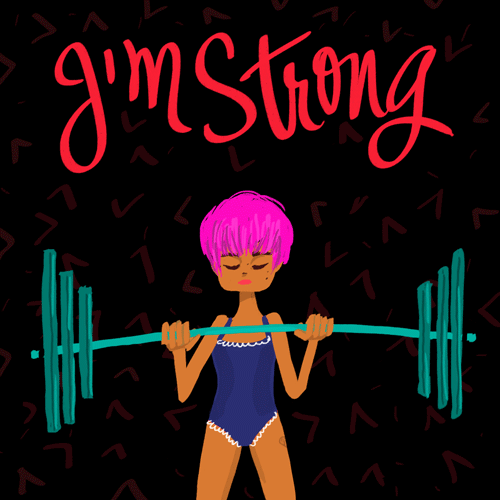UTI vs. STD
How Can You Tell What The Difference Is?
We Get It, You’re Invincible.
You are a strong, and independent human being. Your life feels like one of those car commercials where you’re springboarding from one activity to another to show how versatile you are. Boss life. Mom life. Student life. Athletic life. Obscure activity, like underwater-basket-weaving… life.

What a time to be alive. It kind of feels like you’re living in a never-ending state of FOMO (fear of missing out). There will always be someone busier than you, and, ultimately, you could always be doing more. Right? Maybe the only time you really allow yourself to listen to your body or even just your lady parts is during your yearly gyno visit. And let’s not talk about how hard it is to schedule that visit into your already jam-packed schedule.
If you’re relating to this blog post right now, then you’re probably smart, you’re probably capable of knowing your body, and most importantly: You probably know when your body is doing something out of the ordinary. And when something is out of the ordinary, you acknowledge it with hesitance.
Maybe if you ignore it, then it will go away. It can’t be a UTI, because, you really don’t have time for a UTI. Also, it’s definitely not an STD, because that’s just out of the question! If you BELIEVE that you are fine, you’ll WILL that belief into a reality. That’s why AIDS is totally not an issue in today’s society at all (just kidding everyone; it is.)
“No pain, no gain,” is actually really bad advice when it comes to ignoring mysterious symptoms that your body is having, especially when they’re occurring down there. When your private parts start to feel funky, there are two things that are both very likely and also very easily mistaken: UTIs (Urinary Tract Infection) and STDs (Sexually Transmitted Disease.)
Learn if UTIs can be sexually transmitted.
What is a UTI?

A UTI is an infection caused by bacteria that get into any of the four parts of the urinary tract (urethra, bladder, ureter, kidneys) and then multiplies.
Each component of the urinary tract performs a vital function:
-
- The urethra is the tube that carries urine from the bladder to the outside the body.
-
- The bladder stores urine until it goes to the urethra.
-
- The ureter are the tubes that carry urine from the kidneys to the bladder.
- The kidneys filter waste from the blood to produce urine.
The bacteria known as Escherichia coli (E. coli) is responsible for about 90% of all UTI cases. E. coli is usually found naturally on the colon or around the anuses of humans and animals.
Female urethras are much closer to the anus than in male anatomy, resulting in UTIs being more prominent among women. It is estimated that nearly half of all women will have at least one UTI in their lifetime.
So, How do You Get a UTI?
Here are a few common ways that UTIs can develop:
-
- Wiping back to front after using the bathroom can increase your chances of getting a UTI. This allows bacteria from the anal region to be transported to the vaginal opening.
-
- Forgetting to urinate immediately after sexual activity.
-
- Having the urge to urinate, but waiting or holding it for too long can allow bacteria to multiply in the bladder.

- Using a diaphragm for birth control can lead to the spread of bacteria and leave you at high risk.
- Urinating through a catheter can cause bacteria to flourish.
- Prolonged periods of immobility can allow for urine to sit in the bladder for too long. This is especially common when recovering from surgery.
- Wearing underwear or panties without a cotton crotch can allow moisture and bacteria to get trapped against the body.
- Taking a bath rather than showering can cause bacteria from bath products or unclean water to enter the urinary tract.
- Having the urge to urinate, but waiting or holding it for too long can allow bacteria to multiply in the bladder.
-
- Wearing tight-fitting clothing that isn’t made of a breathable fabric.
- Using feminine sprays or douching can irritate or cause infections.
What is an STD?
An STD is a sexually transmitted disease that is transmitted through oral, vaginal or anal sex, intravenous drug use, or through non-sexual contact such as childbirth or breastfeeding. The Centers for Disease Control and Prevention (CDC) estimates that there are 19 million reported STD cases each year in the United States. STDs are common and it is possible to be infected without being aware because many STDs do not display obvious symptoms. Getting tested for STDs once or twice every year is recommended. Regular STD testing is a great way to protect your sexual health as well as the health of your partner(s).
So, How Do You Get an STD?
Secure and Confidential
STD testing services
The fastest results possbile - available in 1 to 2 days
Secure and Confidential
STD testing services
The fastest results possbile - available in 1 to 2 days
STDs can occur in a myriad of ways:
-
- Having unprotected sex with someone who has also been affected.
-
- Eating contaminated food that has been contaminated with fecal matter can potentially transfer hepatitis A (HAV).
-
- Skin-to-skin contact with someone who has been affected by HPV or herpes can increase the risk of contracting either infection.
-
-
- Sharing sheets, towels, or clothes (especially if they’ve been damp within the hour) can increase the chance of spreading Trichomoniasis.
-
- Sharing needles or even razors, which cause the risk of breaking the skin and mixing blood, can lead to catching, developing, and the passing on of STDs.
Similarities and Differences of UTIs and STDs
UTIs and STDs share very common symptoms and are misdiagnosed more often than you may think. According to the American Society for Microbiology, 64 percent of the patients with an STI (sexually transmitted infection) were actually diagnosed as having a UTI instead. This is problematic. Not only are women being needlessly prescribed a UTI treatment (which can lead to antibiotic resistance, making it harder to actually treat a UTI if she gets one in the future), but it may also cause an undiagnosed STD to develop into a more serious issue. In the beginning stages, many STDs are treatable, but the further they are allowed to progress, the more complicated and expensive treatment becomes.
UTI vs. STD Symptoms
Here are few symptoms that UTIs and STDs share:
-
- Dysuria (painful or burning urination)
-
- Increased frequency of urination
-
- Urgency of urination
-
- Foul smelling urine
-
- Cloudy or dark urine
-
- Pelvic pain
Though Many STDs are asymptomatic (do not show symptoms), there are a few distinguishers that could clue you in as to whether your case is in your reproductive organs or in your urinary tract.
Here are a few symptoms that are more commonly associated with STDs and not UTIs:
-
- Vaginal blisters or blisters in the genital area
-
- Vaginal rash
-
- Pain during intercourse
-
- Bleeding or spotting between menstrual cycles
-
- Fever
-
- Nausea
-
- Sore throat
- Swelling of joints
So, what should you do if you are experiencing any symptoms whatsoever?
GET TESTED
Cranberry juice is not some magical witches brew that will somehow cure you of a UTI.
Though this sweet drink has been proven to bring peace of mind, it has never scientifically shown any results in women with urinary tract infections.
Ignoring your symptoms or letting the thought process end after a late-night, frantic google search is not the right approach. Even if your symptoms go away, they can still lead to the disease or infection worsening and becoming more difficult to treat.
Ultimately, the safest thing to do is get tested. Even if your doctor already diagnosed your UTI, there’s still room for human error and you may have an STD.
Let’s Just Try To Avoid UTIs and STDs Altogether
Here are a few ways to avoid infections and diseases that nobody in their right mind has time for:
-
- Always, always, always have protected sex
-
- Talk to your partner about their sexual history.
-
- Avoid sharing sheets, towels, and underwear.
-
- Don’t share needles or razors.
-
- Always pee after sex.
-
- Avoid holding it in for too long when you have to pee
- Avoid wearing skinny jeans if they’re just a little bit too skinny.
- Wear panties with a cotton crotch.
- Plan to get tested for STDs once every 6 months to a year.
In Conclusion: Listen to Your Body
If you feel weird, in any way at all, you should not ignore it. It’s time to show yourself a little love, embrace your inner hypochondriac, and indulge in a test. Letting any type of problem worsen will only cost you more money and time in the future.

So, let’s all just take a moment to collectively agree to take care of ourselves. You know, like when you notice that your mortal body is doing something strange, you react.
For fast, private, and affordable options that will fit into your hectic life, no matter how busy you are, get tested with STDcheck.com and UTItreatment.com for the peace of mind that you deserve.
Medically Reviewed by Erin Zinkhan, MD, BSBE on May 17, 2022
Secure and Confidential
STD testing services
The fastest results possbile - available in 1 to 2 days

Tagged
Categorized As
Author: Lauralei Like
Lauralei graduated from SHSU in 2017 with a B.A. in Mass Communication: Public Relations and Advertising. Mass Communication is the perfect term for what she loves to do: Communicate to the masses the importance of destigmatization and promoting an honest conversation surrounding sexual health. Before Lauralei joined STDcheck.com, she worked for a branding and marketing agency, but she longed to work with a company that was committed to creating a meaningful sense of community and making the world a better place; STDcheck.com turned out to be the perfect fit. Lauralei is the official STDcheck.com relationship expert and pun-master. She believes that it is her sworn duty to provide the internet with reliable, well-researched, and probably funny information when it comes to whatever she is writing about. Her writing has been featured in numerous publications, including Bustle, The Epoch Times, Romper, MedTraveler, and Healthable. When Lauralei isn’t writing, she’s playing with her pet bunnies, sewing dresses, or searching for the best new brunch spot.




